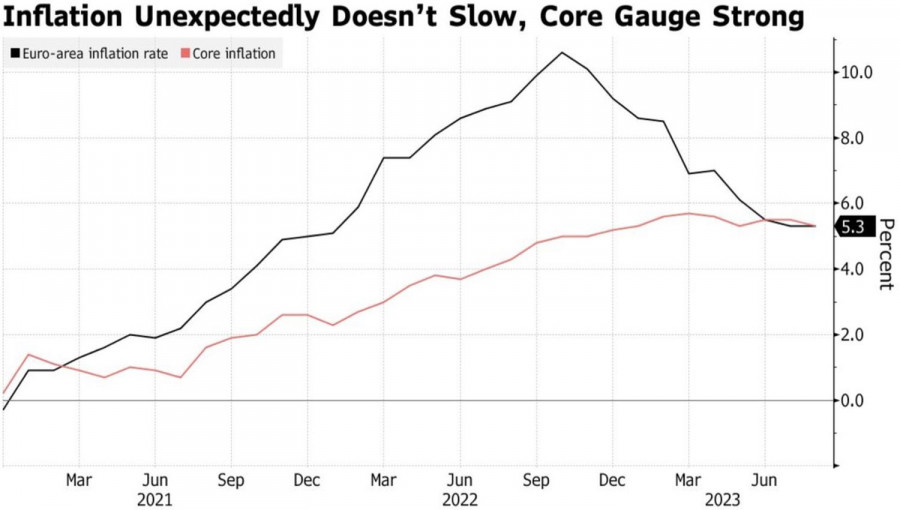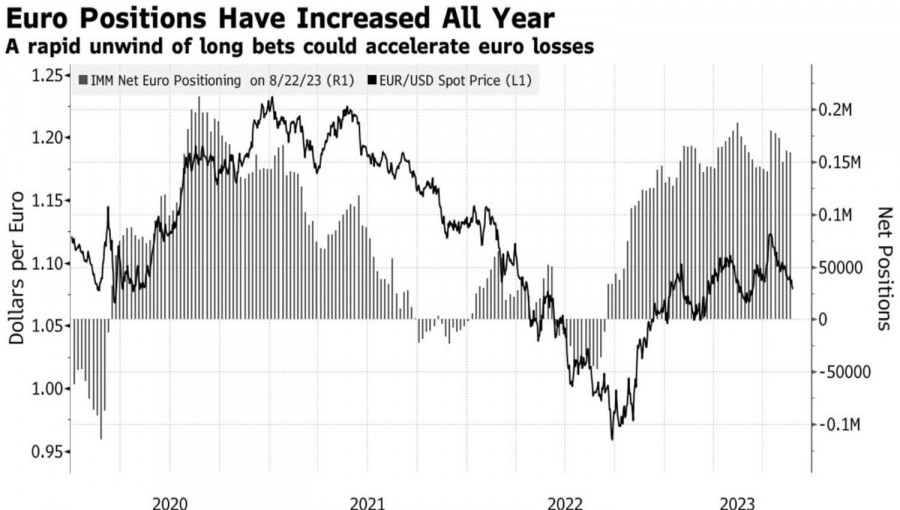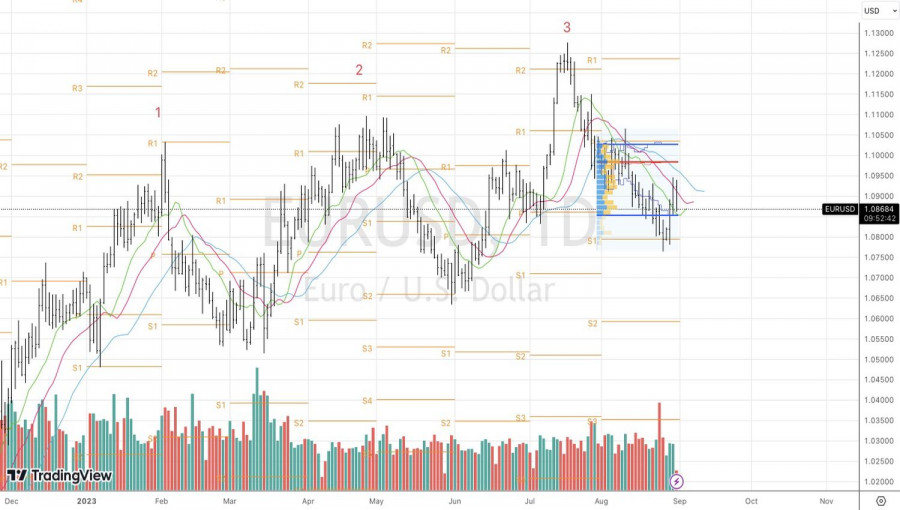
Buy on rumors, sell on facts. After the surge of EUR/USD above 1.09 based on German and Spanish inflation data, the reluctance of consumer prices in the Eurozone to slow down and persistently high core inflation at 5.3% prompted the bulls to book profits. The euro lost a large portion of the previous day's gains, and the Forex market again talked about the idea that a weak economy cannot have a strong currency.
Dynamics of European inflation

According to European Central Bank Executive Board member Isabel Schnabel, the GDP growth prospects of the currency block are more dire than one could have assumed. Schnabel is one of the most hawkish members, so her comments and reluctance to signal a deposit rate hike in September became catalysts for the EUR/USD peak.
The market narrative began to shift from a soft landing of the U.S. economy to heightened risks of recession in the currency block and a sluggish recovery in China. If the weaknesses of the Eurozone are not enough to slow down the core inflation, it will have to deal with a downturn. Meanwhile, the forecast of a leading indicator from the Atlanta Fed at 5.9% for U.S. GDP in the third quarter speaks of divergence in economic growth and contributes to the decline in EURUSD quotes. It's not surprising that speculators continue to reduce their net long positions on the euro.
Dynamics of EUR/USD and speculative positions

In the latest Bloomberg survey, experts lowered the consensus estimate for EUR/USD at the end of 2023 from $1.12 to $1.1. Bank of America and JP Morgan see the main currency pair at 1.05, while BNP Paribas has it at 1.02. Even a bull like HSBC finds it hard to stick to its previous forecast of 1.15. The company clings to the heightened sensitivity of the dollar to bad news from the States, which, in its opinion, indicates the dollar's weakness.
Fears about further deterioration in the Eurozone, combined with the hawkish Schnabel's concerns for its fate, caused the spot market to lower the chances of a deposit rate hike in September to 30%. This fact hit the EUR/USD quotes. However, it should be admitted that within the Fed, many support the end of the monetary policy tightening cycle. For instance, Atlanta Fed President Raphael Bostic believes that the federal funds rate is already in restrictive territory and that there's no need to inflict additional pain on the U.S. economy.

Overall, the main currency pair behaves quite nervously ahead of the release of the U.S. personal consumption expenditure index and labor market statistics. Investors are not sure about the slowdown in PCE and employment. They are playing out European data, although they understand perfectly well that the American data will have a greater impact on Forex.
Technically, a decline in EUR/USD quotes below the lower border of the fair value range of 1.085–1.103 will be an alarming signal for euro buyers. However, what matters is the close, not the breakout. As long as the pair is trading above 1.085, the sentiment remains bullish. We continue to stick to the buying strategy.